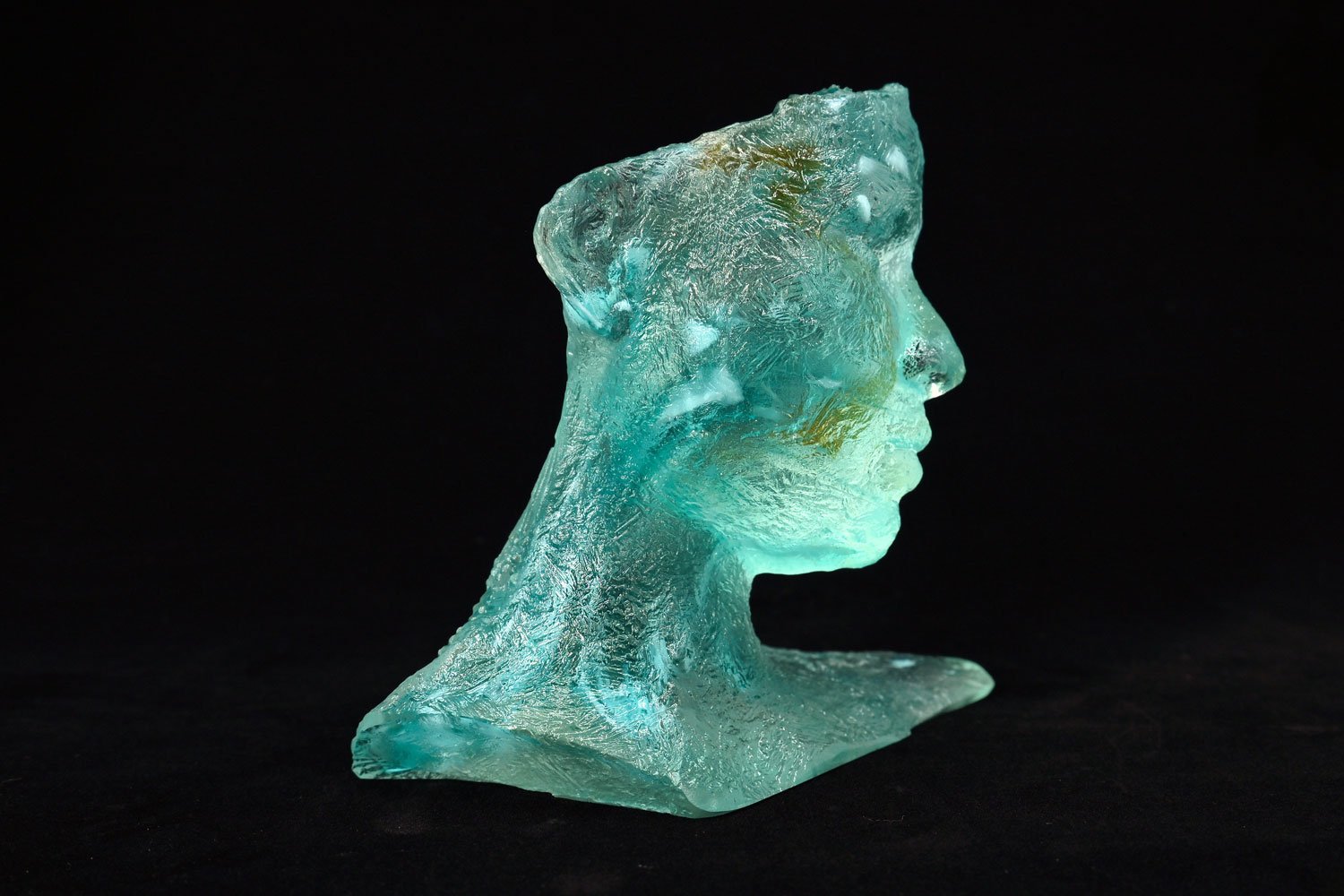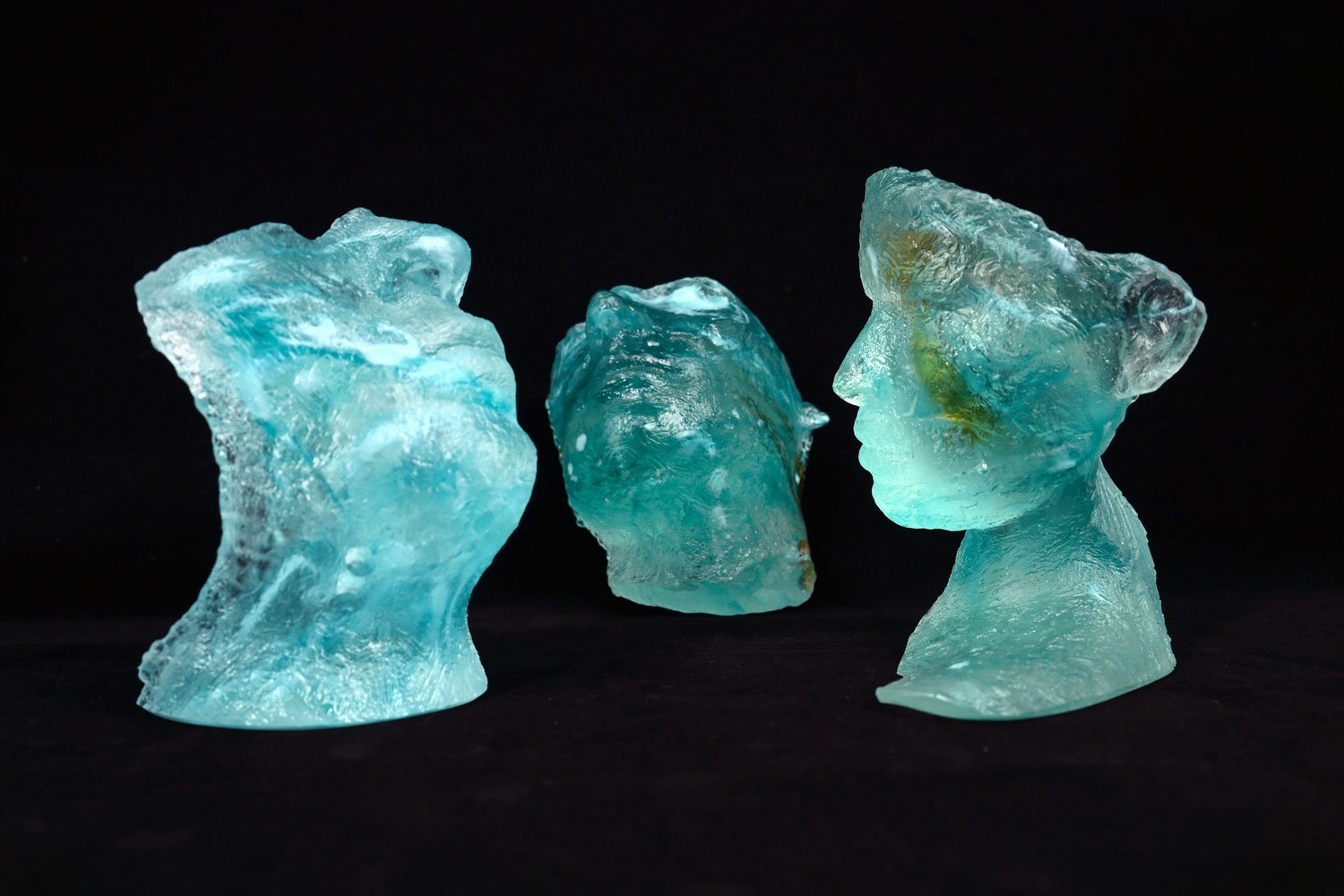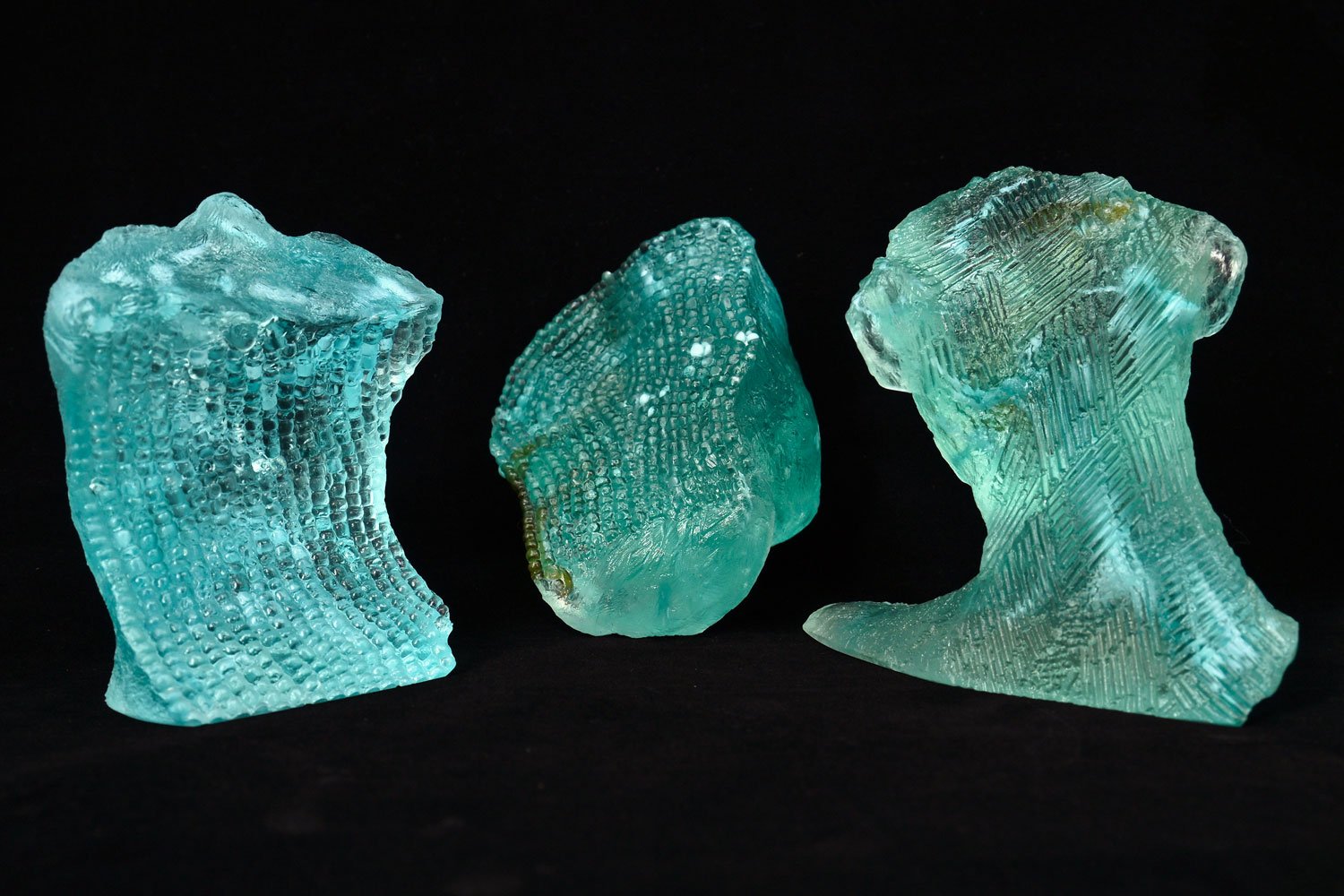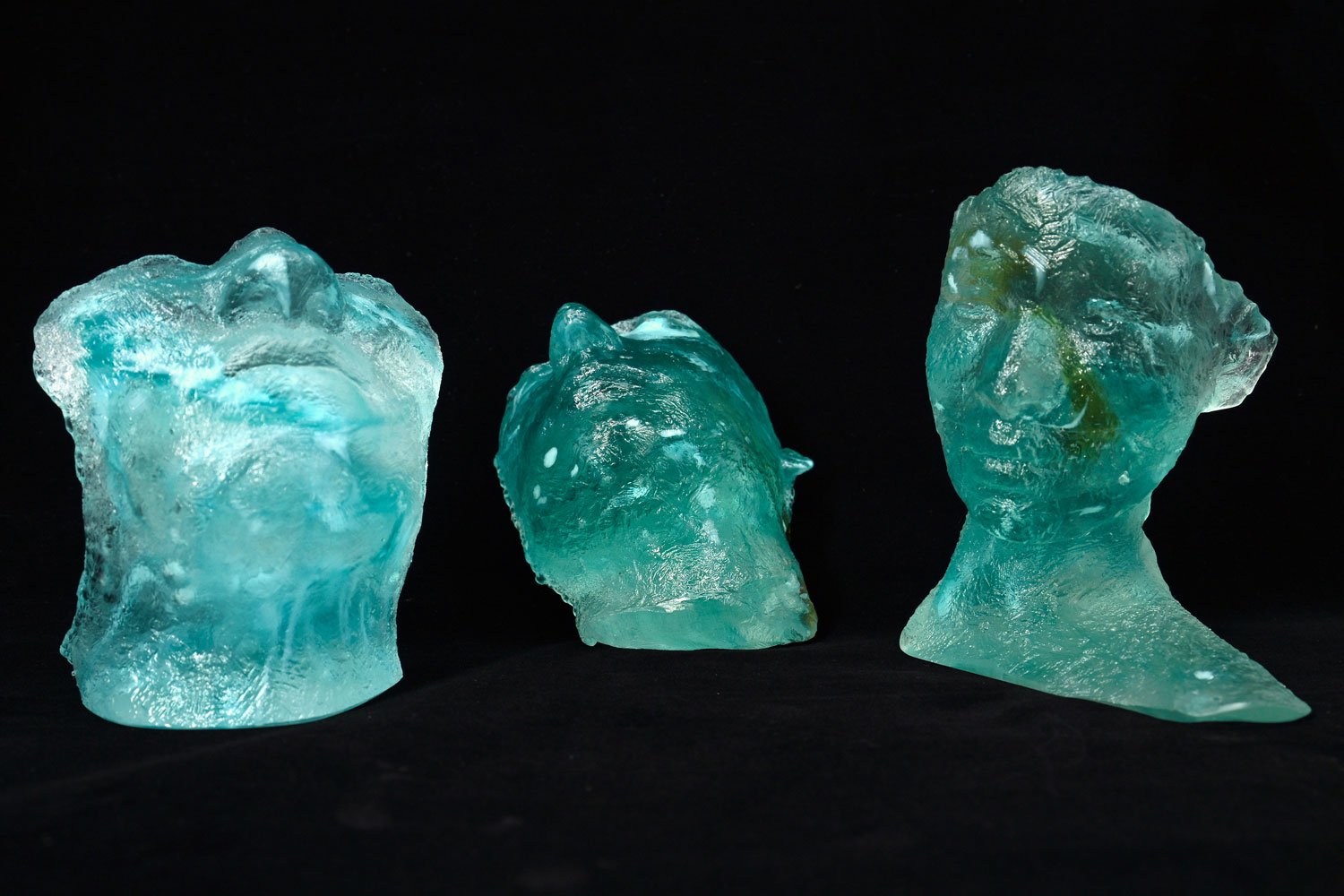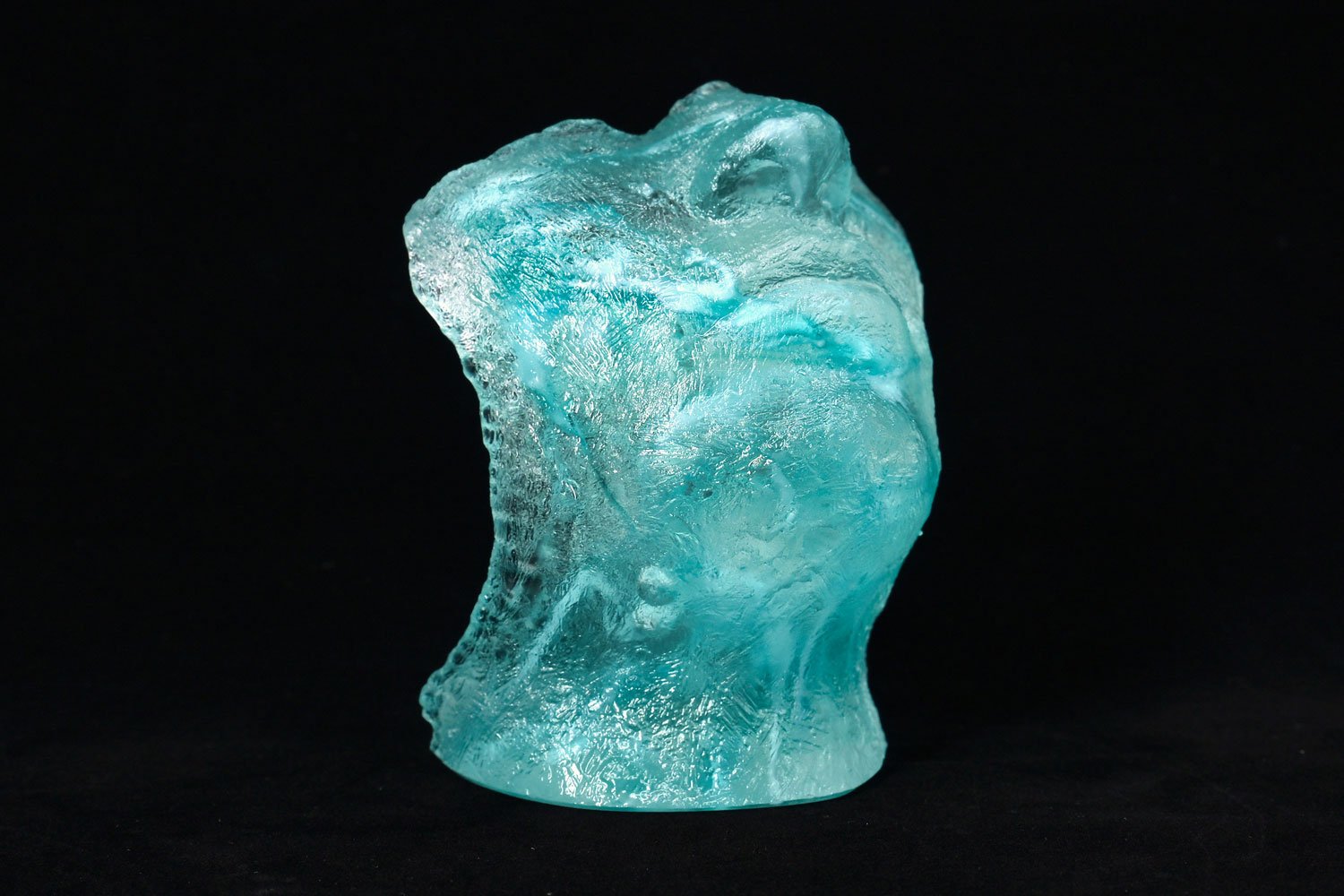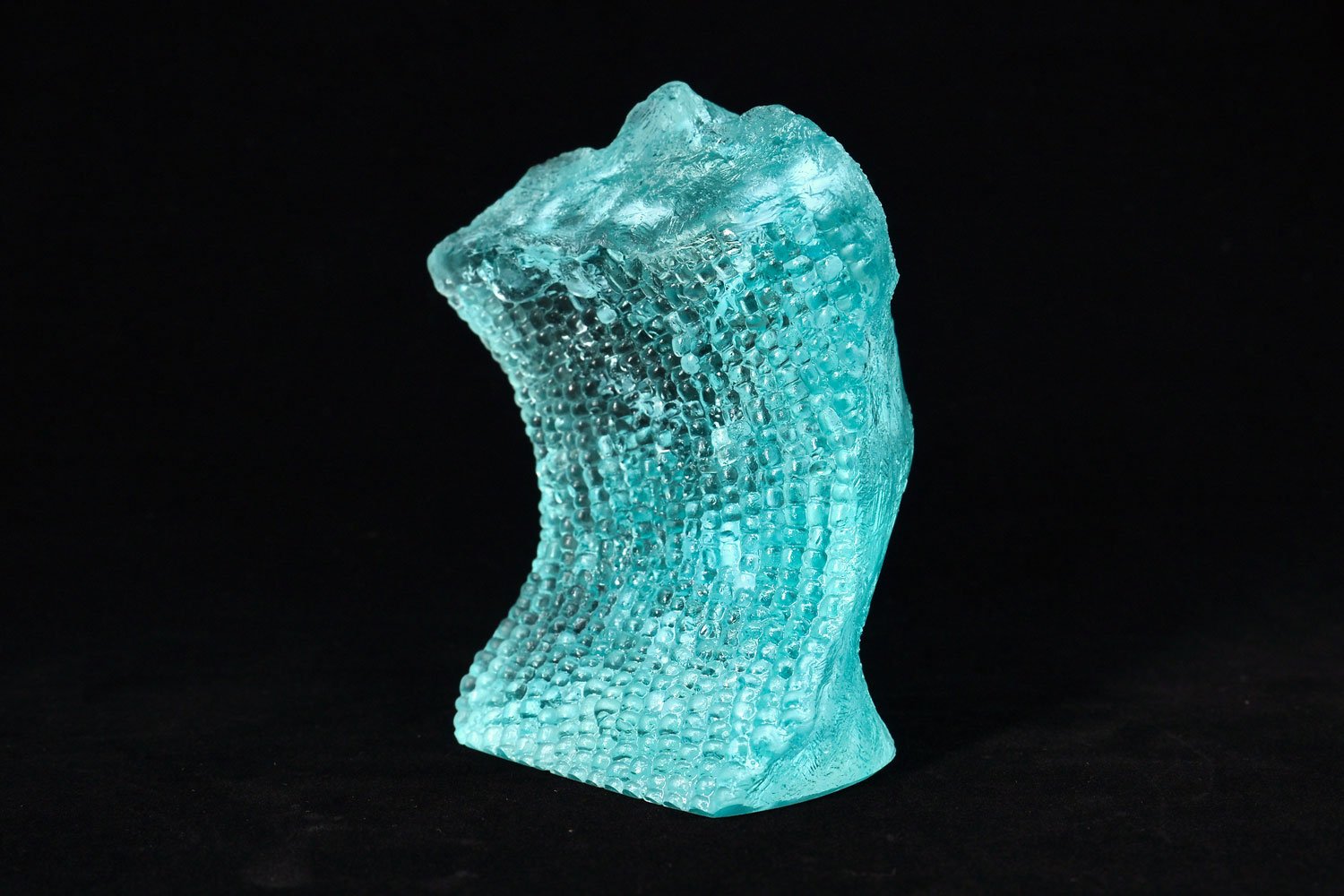Bridging Cultures: The Intersection of Murano Glass and Native American Beadwork Traditions
These artworks combines traditional techniques of Murano glass casting with the use of beadwork, specifically traditional beadwork of regalia, in my sculptures. I explore the historical connection of beadwork within my Chickasaw and Choctaw heritage and contemporary beadwork and Murano glass. The resulting sculptures are a unique blend of tradition and innovation.
I create molds of my sculptures and use the lost wax process to cast the entire sculpture in glass. My focus on color theory and the use of light and color influences from the turquoise stone bring my sculptures to life. My sculptures are an innovative blend of traditional Native American beadwork and the ancient technique of Murano glass casting. They offer a fresh perspective on the intersection of these art forms, and represent an exciting new development in contemporary art.
I strive to honor and revitalize traditional cultural practices while creating new and exciting forms of art. Each piece is a tribute to the rich heritage and cultural significance of these art forms, as well as a celebration of the creative possibilities they offer. My sculptures are a reflection of my passion for preserving and evolving traditional art forms.
Murano glass is a type of glass that has been traditionally made on the Venetian island of Murano, Italy, since the 13th century. The glassmakers of Murano were known for their high-quality, colorful, and intricate glass beads, which were highly prized by European nobility and merchants. In the 16th and 17th centuries, glass beads became an important trade item between Europe and the Americas, and were eagerly sought after by Native American tribes, who used them to decorate their regalia and traditional clothing.
Glass beads have a long and rich history of use in our Native American regalia and traditional clothing. The use of glass beads in Native American regalia can be traced back to the early 17th century when European traders began to bring them to the Americas. Native American Nations quickly embraced the use of glass beads, incorporating them into their traditional clothing and regalia, such as headdresses, breastplates, leggings, and moccasins. Glass beads were especially popular for use in traditional jewelry, including earrings, bracelets, and necklaces.
Beadwork, especially glass beadwork, holds a significant place in the regalia, ceremony, government, and spiritual context of our Nations of the Woodlands in the Southeast United States. Indigenous artisans have historically used a combination of traditional materials such as bone, stone, and wood-carved beads to create intricate and unique designs. The use of glass beads, brought over by European traders, was valued for their bright colors and ability to catch the light. This incorporation of glass beads into regalia and traditional clothing is not only a reflection of the cultural exchange between Europe and the Americas but also the creativity and ingenuity of Native American artisans. Beadwork is a deeply rooted tradition within these nations, representing more than just aesthetic beauty but also holding spiritual, ceremonial, and social importance.

